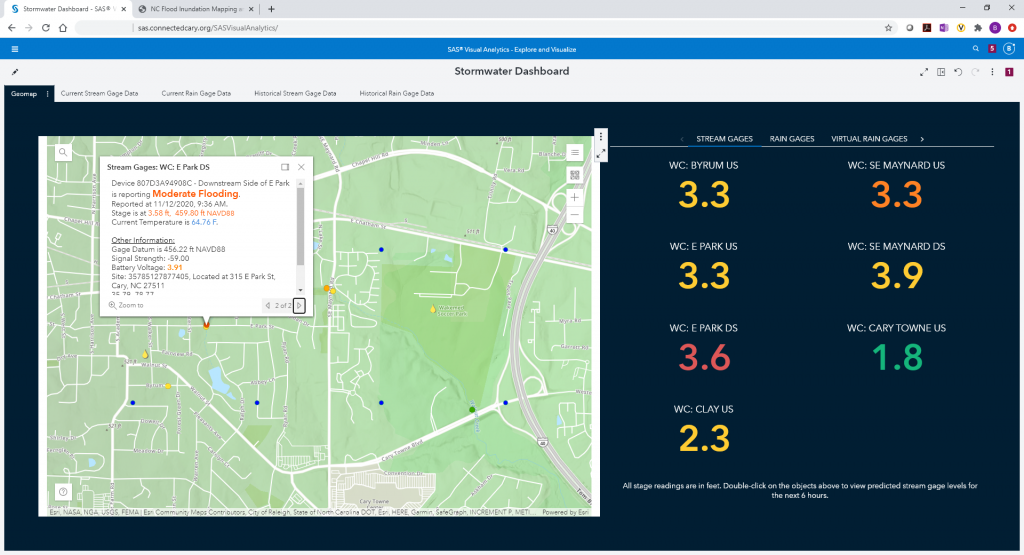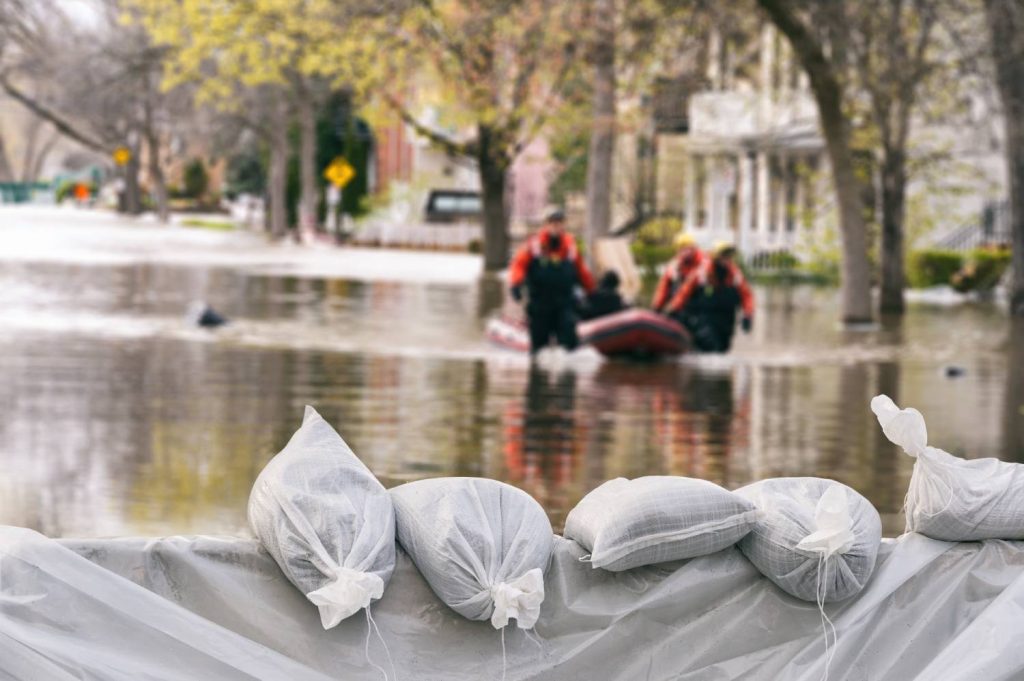“What’s our plan if we get hit by a big flood?”
While this question may be plenty familiar to emergency management professionals, city administrators, legislators, and other leaders in coastal regions that are known for their exposure to potentially disastrous weather events, these days it’s being asked in some unexpected places due to dramatically shifting weather and climate patterns. In fact, even in historically flood-prone areas these fast-moving changes are making it even more difficult to answer this important question. As a result, the 100-, 50-, and even 5-year storm and flood models are increasingly unable to anticipate the impact of more extreme, unprecedented weather events.
The era of more frequent, more extreme flooding events could have a devastating impact on cities, towns, and entire countries. By 2030, the number of people around the world estimated to be affected by annual flooding events will double to 147 million. Annual cost estimates are anticipated to rise to more than $700 billion. These events close roads, destroy infrastructure, interrupt essential services, disrupt long-term development and land use plans, and pose serious safety risks to all who live in areas affected by floods. Put simply, bigger flooding events, occurring at a higher frequency, in more areas around the world are a big deal.
Developing and executing plans to successfully anticipate and mitigate the impact of flooding events requires a new approach. That is exactly what a number of forward-thinking municipalities and countries around the world are putting in place at this very moment. From Southeast Asia to Europe and the US, cities are pursuing analytic strategies to guard against a range of flood challenges. For example:
- In The Netherlands, Rijkwaterstaat (the agency in charge of Dutch public works and water management) is placing advanced Internet of Things (IoT) sensors throughout the North Sea, as well as in the country’s numerous rivers and inlets, so they can harvest, analyze, and act on real-time insights generated from AI and advanced analytics connected to these sensors.
- One of the largest cities in Southeast Asia is pursuing a similar strategy while guarding against an entirely different range of flood challenges.
- Even in smaller communities such as Cary, North Carolina – an inland municipality that recognizes the potentially devastating effects of emerging climate and weather patterns – city leaders are using similar IoT-enabled tools, analytics and technologies to help protect citizens and local watersheds from flooding.
READ MORE: A conversation with Rijkwaterstaat: How SAS is helping keep the Netherlands safe
Each of these approaches uses SAS AI and streaming analytics at the core to manage and make sense of the massive range of data being collected – not only from IoT sensors, but from a host of other sources. These analytics capabilities can only be successful in the context of a broader strategy, however.
We’ve worked directly with large and small countries and municipalities around the world to launch these innovative plans, and have observed a handful of best practices that can help government administrators ensure the success of other flood prevention and management strategies. Here are some of the most important of these practices.
1. Start by establishing “ground truth” data
When you consider all the variables at work in a storm that brings the threat of flooding, it’s no wonder that flood models are so often wrong. Even in the same geographical area, unexpected and unpredictable variations in everything from hydrostatic levels and flow rates to water levels and more can wreak havoc with models, because it’s impossible to prepare for every potential scenario presented by a storm. For example, when a particularly heavy surge in rainfall on one side of town is paired with soil that is already heavily saturated and a few blocked drainage ditches, the results can be disastrous – and may not have been anticipated by any model.
That’s why gaining a more complete picture of live conditions as they unfold – establishing “ground truth” data – is so important. Fortunately, IoT-enabled sensors and other tools available today support a more accurate, dynamic understanding of fast-changing flood conditions, across multiple dimensions.
Rainfall. Rain rates. Soil saturation. Topography. Elevation. Using IoT-enabled sensors, it’s possible to gather detailed data on issues like these in vivid detail in multiple locations across geographies. When constantly updated data on these types of conditions is combined and fed into analytical models, leaders can use the resulting insights to make smarter, more timely flood management decisions, at the moment those decisions can have the greatest impact.
ANALYST VIEWPOINT: SAS is a Leader in the Forrester Wave™ Streaming Analytics, Q2 2021 report
2. Analyze and automate
Establishing ground truth data introduces a massive amount of data into flood management processes – much more data than can be effectively monitored through human oversight. Humans just can’t keep up on their own. But when armed with automation and powerful analytics capabilities, they can.
In this scenario, IoT-enabled sensors are constantly feeding data to analytics tools. The tools are constantly analyzing the data to find patterns and insights, creating a central body of steadily updated, analytics- based insight from which different users across government can draw, receiving data with specific relevance to their mission in ways that match their roles, insight needs and existing processes. For example, the head of emergency management needs a different view of flood data than a city mayor or administrator. Flexible solutions can be tailored to deliver the right types of insight to different users based on their roles and preferences.
Flood management strategies that are enabled by automation allow professionals to focus on making better decisions, rather than spending their time processing and analyzing information – which also helps reduce and eliminate human error along the way. Analytics solutions surface likely scenarios based on current conditions on the ground, empowering experienced professionals to make the right calls at the right moments. In many cases, automation capabilities can be configured to enable critical alerts and tee up emergency response capabilities in advance of a catastrophe taking place.
MORE: Smart cities use analytics and IoT to predict and manage flood events
3. Share across departments and agencies
In most municipalities today, the departments that are impacted by floods tend to operate in relative isolation from one another. In practical terms, that means (for example) that while there is significant overlap in scope between the stormwater team and the transportation team, these two organizations are likely to coordinate only loosely. They may work together even less in the face of an oncoming storm, when resources are stretched thin. Meanwhile, those are the moments that are most important, where tightly aligned departments can have the biggest impact in successfully managing a flood.
Using a central hub of data and analytics insights, municipalities can facilitate tighter integration between critical departments and units that previously operated in siloes. These groups can benefit from the same data, recognizing that while they may apply the data in different ways, their efforts are connected.

For example, emergency services can prioritize the top five (or fifty, or one hundred) “hot spots” in need of intervention, coordinating with transportation teams to determine whether and how to reach those areas based on projections of the storm surge from another team – with all of them sharing communications in real time, in a central hub.
4. Prioritize public-facing communications
As important as it is to ensure that “internal” stakeholders are sharing and acting on flood-related data and insights, it is just important to ensure that those affected by potential flooding – communities, individuals, businesses, schools, and others – receive timely, actionable communications to keep them safe and well prepared. Of course, this is not a new idea – flood management agencies have worked for years to find new ways to keep the communities they serve well informed in the face of flooding. But advances in technologies have changed what’s possible in this arena, requiring agencies to reassess their approaches.
For example, the same automation capabilities mentioned can serve as the foundation for new, faster, more effective modes of public-facing communication, allowing communities to benefit from the insights gleaned from real-time, IoT-based analysis of current conditions.
These same systems also introduce powerful capabilities for using citizens’ own data and insights to contribute to knowledge about flood threats. If a citizen sees a blocked culvert that is not tracked by monitoring systems, that’s valuable information in the midst of a storm – and it is data that can be input into systems to achieve a more accurate view of fast-changing conditions on the ground. Flood-focused analytics systems are hungry for data, and citizens can be a valuable source of the information they need to be even more accurate and useful.
A responsibility to act
IoT-enabled sensors and other devices have made it easier and more cost effective than ever to create a fuller, real-time view of flooding conditions as they emerge. These capabilities are ushering in a transformative new era in flood management – and it couldn’t happen at a more critical time, as floods are becoming more widespread and more harmful to more people, all around the world.
In this context, acting on these new and emerging capabilities is less a choice than a responsibility. If you’d like to learn more about how to put these tools to work in the battle against flooding in your country, state, or municipality, we can help. In fact, we’re already helping many of your peers around the world deploy IoT and analytics capabilities in innovative new ways every day.
Want to learn more about SAS and Microsoft’s tools to support flood risk management? Visit us at www.sas.com/microsoft-floodmanagement


